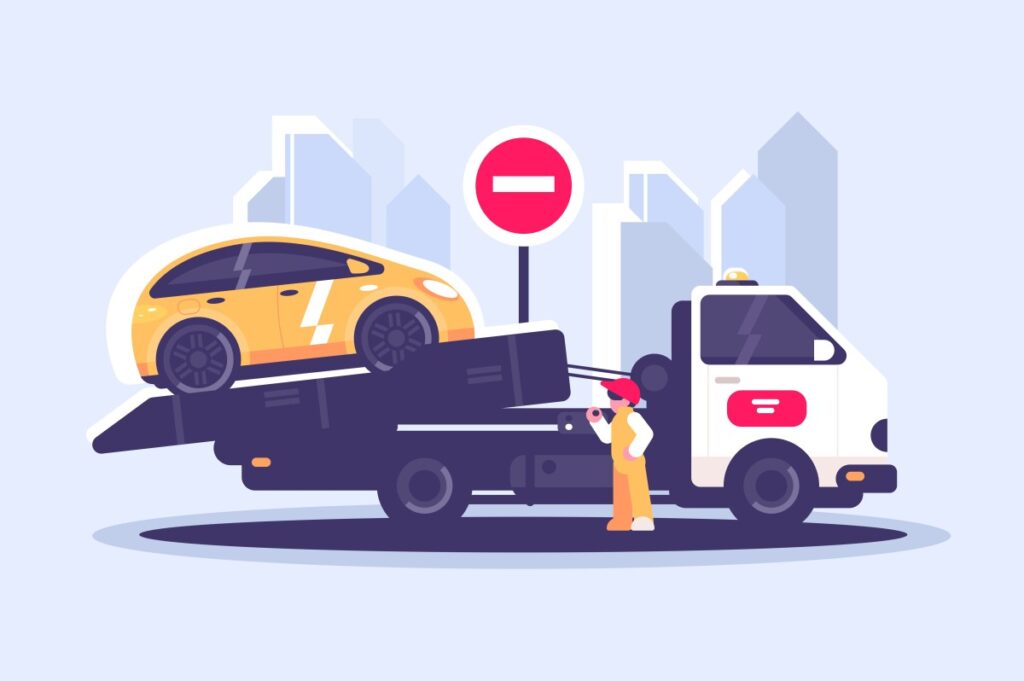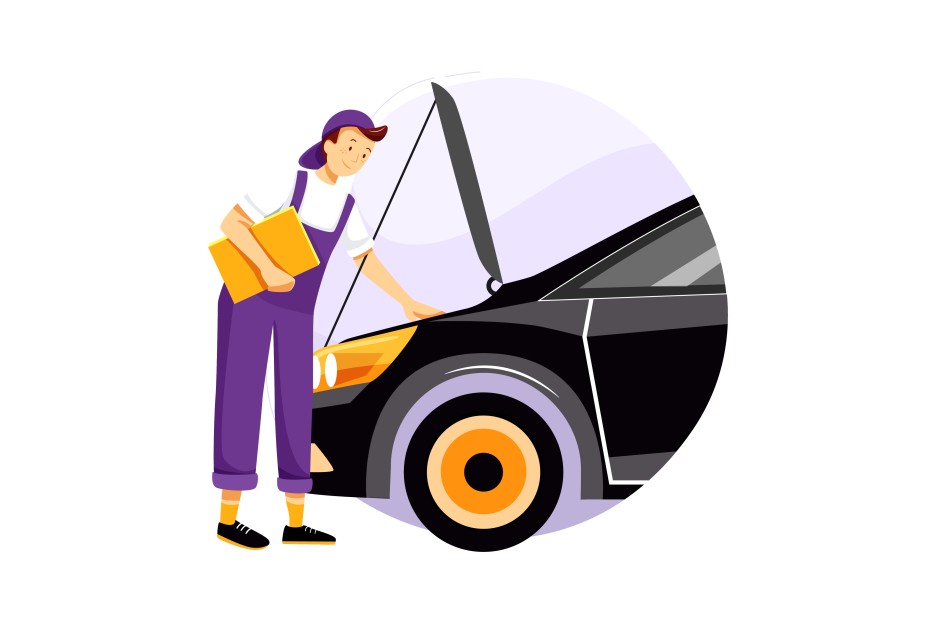A roadside assistance business is a great venture to consider if you’re interested in starting your own company. This kind of business provides services like towing, flat tire repair, gas delivery, and jump-starting vehicles that have broken down on the side of the road. Even though roadside assistance businesses have been around for a while, there is still a lot of room for growth and for new entrepreneurs to enter the market. In this blog post, we’ll go through the steps you need to take to start a successful roadside assistance business.
Why Start Your Own Roadside Assistance Business?
Starting a new roadside assistance business, like any other business, comes with its own set of pros and cons. Here are some of the pros and cons of starting a roadside assistance business:
Pros:
- High demand: Roadside assistance is a service that is always in high demand, especially during peak travel times.
- Recurring revenue: Roadside assistance services typically have recurring revenue, as customers often sign up for ongoing service plans.
- Flexibility: Roadside assistance businesses can often be run with flexible schedules, allowing owners to choose their own hours and work on their own terms.
- Low overhead costs: Starting a roadside assistance business typically requires minimal startup costs, and ongoing costs can be kept low by maintaining efficient operations.
Cons:
- High competition: The roadside assistance industry is highly competitive, with many established players already in the market.
- Seasonal demand: While demand for roadside assistance is high year-round, demand can fluctuate seasonally based on weather and travel patterns.
- High risk: Roadside assistance businesses can be risky due to the inherent dangers of roadside work and the risk of accidents.
- Regulatory compliance: Starting a roadside assistance business requires compliance with a variety of regulations, which can be time-consuming and expensive.
- Heavy equipment: If you plan to operate a tow truck, for example, you will need to invest in expensive equipment, which can be a significant upfront cost.
Steps to Follow on How to Start a Roadside Assistance Business
1. Identify Your Target Customers
a. Research the roadside assistance industry to understand customer needs
Before starting a roadside assistance business, it’s important to research the industry to understand customer needs. By doing this, you can identify gaps in the market and determine which services are in demand. One way to conduct this research is to analyze the services offered by existing roadside assistance companies. Look for areas where they fall short or services they don’t offer at all.
Another way to understand customer needs is to conduct surveys or focus groups with potential customers. Ask them about their experience with roadside assistance, what services they need most, and what pricing model they prefer.
b. Identifying the geographical area and demographics of your target market
The location of your business will impact the types of services you offer, as well as the pricing model you choose. Consider the following factors when identifying your target market:
- Location: Determine the areas where your services are most needed. For example, if you’re in a rural area with limited access to auto repair shops, you may want to focus on offering mobile repair services.
- Demographics: Understand the demographics of your target market. This includes age, income level, and occupation. This information can help you tailor your marketing strategies and pricing model to better appeal to your target audience.
- Competitors: Analyze the competition in your target market. Look for gaps in the services they offer or areas where they fall short. This can help you differentiate your business and provide services that are in high demand.
c. Testing different business models
Start by researching and testing different business models in the market. Determine the most profitable business entity that fits your goals and resources. Consider the following business models:
- Freelance business model: Provide a roadside assistance service as an individual, without the backing of a company. Freelancing allows for flexibility but requires significant marketing efforts to attract customers.
- Partnership business model: Join forces with an existing roadside assistance company to provide services under their brand. This model provides instant access to an established customer base and eliminates the need for extensive marketing efforts.
- Franchise business model: Purchase a franchise license from an existing roadside assistance company to operate under their brand. This model offers the advantage of an established business model, customer base, and marketing strategy, but requires a significant investment.
Are you looking to start your own roadside assistance business?
Contact Growth Hackers
2. Develop a Business Plan
a. Creating a Mission Statement That Defines the Goals of Your Business
A mission statement is a concise statement that defines the purpose and objectives of your business. It should outline the core values of your business and what sets it apart from competitors. A well-written mission statement can help you stay focused on your goals and guide decision-making throughout the life of the business.
For example, a mission statement for a roadside assistance business might be:
“Our mission is to provide reliable and affordable roadside assistance to drivers in the local community. We strive to be the go-to provider for emergency and non-emergency roadside services, with a commitment to safety, convenience, and exceptional customer service.”
b. Market Analysis and Segmentation to Identify Customer Needs
Market analysis involves researching the industry and analyzing customer needs and preferences. On the other hand, market segmentation is the process of dividing customers into groups based on their needs and preferences. By segmenting your target market, you can develop targeted marketing strategies that resonate with each group.
c. Developing a Marketing Strategy to Build Brand Identity and Awareness
A marketing strategy involves identifying the best channels to reach your target audience and developing messaging that resonates with them. Your marketing strategy should include a mix of online and offline tactics, such as social media, local SEO, email marketing, and local advertising.
For a roadside assistance business, consider partnering with local auto repair shops or towing companies to reach a broader audience. Develop targeted messaging that highlights the convenience and reliability of your services.
d. Financial Projections and Budgeting to Ensure the Business Is Financially Viable
Financial projections and budgeting are about estimating revenue and expenses for the first few years of operation and identifying potential areas of risk. Consider the following factors when developing financial projections:
- Startup costs, such as equipment, insurance, and licensing fees
- Overhead costs, such as rent, utilities, and salaries
- Revenue streams, such as one-time service fees and monthly subscription plans
- Cash flow projections to ensure the business has enough working capital to operate
3. Obtain Necessary Permits and Licenses
a. Researching and Understanding the Regulatory Environment for Roadside Assistance Businesses
Before you can obtain the necessary permits and licenses for your roadside assistance business, you need to understand the regulatory environment in your state or country. This includes researching laws and regulations related to roadside assistance services, business insurance requirements, and safety standards.
b. Obtaining the Necessary Licenses and Permits
In the US, the federal government requires businesses to register with the Small Business Administration (SBA) before they are able to apply for any other licenses or permits. This is done through the SBA’s online portal, and businesses must provide their tax ID number, basic contact information, and other pertinent details.
Businesses will then need to obtain a state license, which can include an occupational license if the business offers repair services, as well as a commercial driver’s license if tow truck operators will be employed by the company.
In addition, businesses must also obtain liability insurance coverage in order to protect themselves from any potential lawsuits that may arise while providing roadside services. Liability insurance requirements vary by state and should be researched accordingly before starting a business. It is also important to note that many states require roadside assistance businesses to display special signage indicating that they are bonded or insured before providing services.
Finally, businesses should check with the local city or county offices for any additional permits or licenses required for operating a business within their jurisdiction. Different states have different laws regarding signage for advertising purposes, as well as the types of materials and chemicals used in services provided.
Here’s a summary of the permits and licenses you need to obtain to start a roadside assistance business:
- Business License: A business license is required to operate any type of business in the US. The specific requirements for a business license vary by state and locality, so it is important to research the specific requirements in your area.
- Commercial Driver’s License (CDL): If you plan to operate a tow truck or any other type of commercial vehicle, you will need a CDL. This requires passing a written and driving test.
- Tow Truck Operator License: Some states require any tow truck driver to obtain a separate license to operate a tow truck. This may involve passing a background check and providing proof of insurance.
- Motor Carrier Authority: If you plan to transport vehicles across state lines, you will need a Motor Carrier Authority (also known as an MC number) from the Federal Motor Carrier Safety Administration (FMCSA).
- Insurance: Roadside assistance businesses need to have liability insurance to protect themselves from any damage or injuries that may occur during the course of their work. This may include liability insurance, commercial auto insurance, and worker’s compensation insurance.
- DOT Number: If you operate commercial vehicles weighing more than 10,000 pounds, you will need a DOT number from the FMCSA.
- Bond: Some states require a bond to ensure that your business can cover damages in case of accidents.
- Environmental Permits: Roadside assistance businesses that deal with hazardous materials or waste may need to obtain environmental permits at the state and local levels.
Contact your state or country’s Department of Motor Vehicles (DMV) or Department of Transportation (DOT) to learn about the specific requirements in your area. You may also want to consult with a lawyer who specializes in business law to ensure that you are following all necessary regulations.
c. Complying with Tax Laws and Regulations
As a business owner, you are responsible for complying with all tax laws and regulations. This includes registering your business with the appropriate tax agencies and paying all necessary taxes. Contact your state or country’s Department of Revenue or Taxation to learn about the specific requirements in your area.
4. Develop High-Quality Products and Services
Once you have identified your target market, created a roadside assistance business plan, and obtained the necessary permits and licenses, it is time to develop high-quality products and services that will set your roadside assistance business apart from the competition. Here are some strategies to consider:
a. Investing in high-quality equipment, including tow trucks and diagnostic tools
To provide effective roadside assistance services, it is essential to invest in high-quality equipment that can handle a variety of vehicles and situations. This includes a towing vehicle of various sizes and types, as well as diagnostic tools and equipment for basic repairs.
When selecting equipment, it is important to consider factors such as durability, reliability, and ease of use. You may also want to research the latest technology and equipment innovations to stay ahead of the competition.
b. Hiring qualified drivers and mechanics
Your roadside assistance business is only as good as the people who work for it. When hiring drivers and mechanics, look for individuals with experience in the industry, as well as strong communication and problem-solving skills. It may also be helpful to conduct background checks and verify driver’s licenses and insurance before hiring.
To retain high-quality employees, it is important to offer competitive compensation, opportunities for growth and advancement, and a positive work environment.
c. Providing exceptional customer service to build trust and loyalty
One of the most important factors in the success of your roadside assistance business is the level of customer service you provide. This includes responding quickly to customer calls, treating customers with respect and empathy, and communicating clearly and effectively about the services you provide.
To build trust and loyalty with customers, consider offering value-added services such as roadside repairs and tire changes, as well as promotions and discounts for repeat customers.
Start your own roadside assistance business and make a difference in your community!
5. Finance Your Business
Starting a roadside assistance business requires a significant investment of both time and money. In order to launch and sustain a successful business, you will need to carefully consider your financial options and budget effectively. Here are some key steps to financing your business:
a. Identifying Sources of Funding
- Loans: There are a variety of loans available to small business owners, including traditional bank loans, SBA loans, personal loans and online loans. Research the various loan options and choose the one that best fits your needs. Take note loan providers will look into your business bank account to see if it’s safe to lend you money.
- Grants: There are a variety of grants available to small business owners from the government, non-profit organizations, and private foundations. However, these grants often have specific eligibility requirements and may require a significant amount of paperwork.
- Crowdfunding: Crowdfunding platforms, such as Kickstarter or GoFundMe, can be a great way to raise funds for your business. However, you will need to create a compelling campaign that resonates with potential backers.
b. Creating a Budget and Monitoring Cash Flow
- Estimate your startup costs: This includes everything from equipment and supplies to marketing and legal fees.
- Create a financial plan: A financial plan outlines your projected expenses, revenue, and profit for the first year of your business. This will help you to stay on track and adjust your budget as needed.
- Monitor your cash flow: Keep track of your income and expenses on a regular basis to ensure that you are staying within your budget and have enough cash flow to cover expenses.
c. Hiring Employees and Paying Them Competitive Salaries and Benefits
- Determine the number of employees you will need: This will depend on the size and scope of your business.
- Determine competitive salaries and benefits: Research the average salaries and benefits for employees in your area and industry to ensure that you are offering a competitive package.
- Ensure compliance with labor laws: Be sure to comply with all federal, state, and local labor laws, including minimum wage and overtime requirements.
Starting a roadside assistance business can be challenging, but with careful planning and execution, it can be a profitable venture. Ensure that you comply with legal requirements, purchase necessary equipment, hire trained employees, and develop safety protocols to provide high-quality roadside assistance services. Implement marketing strategies to attract more customers and grow your business.
Final Thoughts On How to Start a Roadside Assistance Business
A roadside assistance business provides services such as towing, flat tire repair, gas delivery, and jump-starting vehicles that have broken down on the side of the road. Starting a roadside assistance business has both pros and cons, such as high demand for services, potential for recurring revenue, and good flexibility, but also high competition, seasonal demand, and risk of accidents.
To start a successful roadside assistance business, you need to identify its target customers by researching customer needs in the industry, understanding the geographical area and demographics of the market, and testing different business models. You must comply with tax laws and regulations by registering your business with local authorities and obtaining necessary permits and licenses. Investing in high-quality equipment, including tow trucks and diagnostic tools, ensures you provide effective roadside assistance services.
But how will people know about your roadside assistance business if you don’t market your services to the right audience? By getting Growth Hackers to promote your brand!
Transform your brand into a power player with Growth Hackers, a leading organic SEO Agency! Our team crafts top-notch content that connects with your audience on every platform—through engaging blog posts, social media magic, captivating emails, and compelling website copy. We offer an array of content creation, marketing, and management services that will make your brand shine. Let us help you weave content that will wow and win over your target audience like never before.
Don’t miss the chance to take your business to the next level by tapping into Growth Hackers’ expertise.







